Thornback ray numbers noticeably fell in some areas during the 1990s due to commercial overfishing, especially tangle netting, but their stocks are now rebuilding quickly and in some areas are not too far away from where they were pre-1990. This is evident in both the improved numbers of fish caught, but also the increase in thornbacks above 8lbs in weight, with double figure fish now far more common.
The average size is between 4 and 7lbs from the surf beaches, but off the deeper water marks fish to 10lbs or more are possible.
The Season
Although thornbacks can be caught most of the year, they seem to migrate inshore at different times in different areas. In Anglesey, the thornback rays appear in January off the southern shore. Off the east coast beaches and Holderness, it’s February to March. The Devon and Cornish marks see numbers increase from March onwards, but in the northwest and inside the Scottish sea lochs it’s late March into April when stocks increase. Both sides of the Bristol Channel produce thornbacks consistently throughout the year.
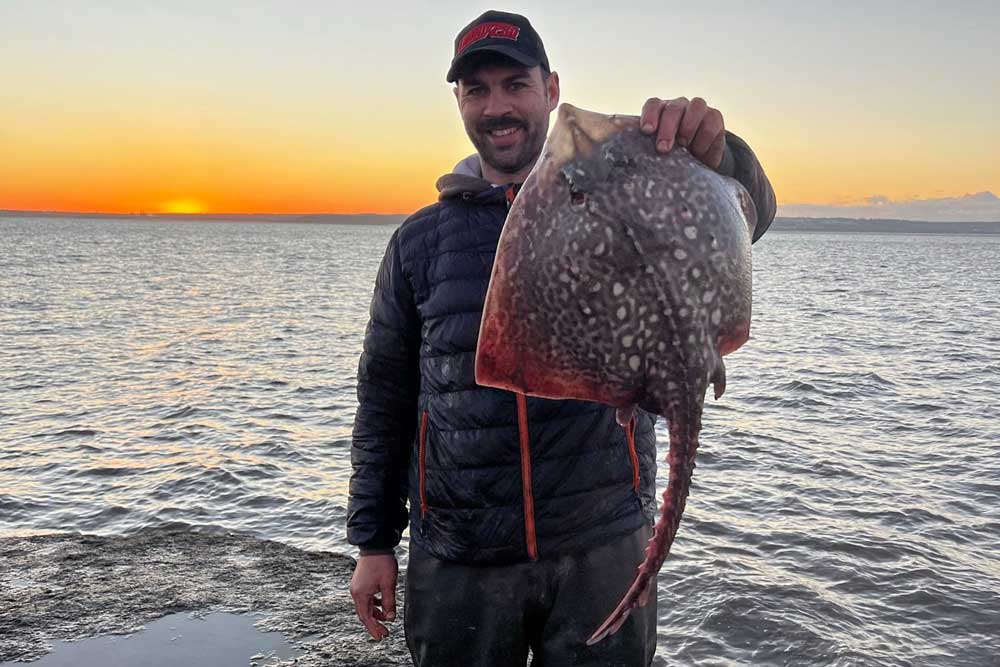
They move into shallow water and can be taken off surf beaches between March and June, probably taking advantage of the main crab peel. Thornback rays then tend to move back out to deeper water, which is when the deeper rock ledges start to produce their best form.
Some areas such as the surf beaches of West Wales, the Cornish beaches, also the Cornish and Scottish rock ledges see a second inward migration in October lasting through to the end of November when the rays follow the whiting in.
Habitat
For the most part, thornbacks live over clean sand off rock ledges and surf beaches. However, they’ll also be found on cleaner patches of sand scattered among small shingle and boulders and in among reef ground. They have a habit of laying up tight to the edge of rough ground where the sand junction is. They move into larger estuaries and harbours living over muddy bottoms, plus they are often caught when fishing from breakwaters and piers that face the open sea.
The best place to target thornbacks off rock ledges is where rocky headlands flank the mouth of a sandy bay, as numbers of rays will lay up here then advance inwards with the tide into the bay to feed. On the surf beaches, they push in with the tide and will drop into the gullies that run parallel along the beach where the tidal currents flow and let the tide bring the food to them.
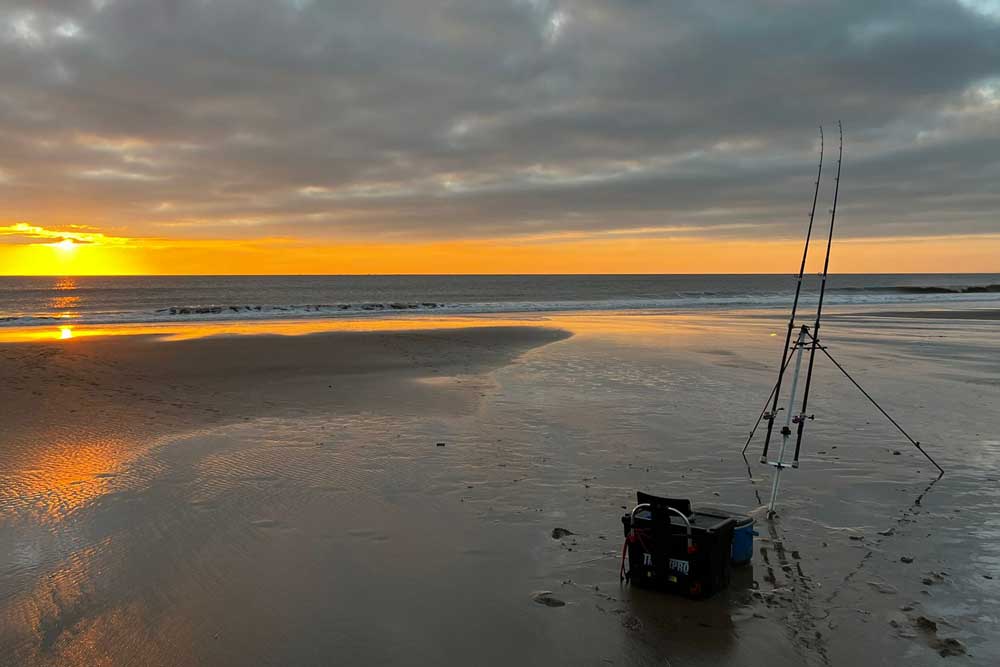
Weather and Tides
This ray dislikes rough seas, even in deeper water. Look for periods of relatively settled weather with just an onshore breeze producing a steady sea swell for ideal conditions. On the surf beaches, again, settled seas with a steady line of surf tables is best. What they do like is a settling sea that still carries some colour a few days after a gale has gone through if this coincides with rising tides.
If you’re fishing by daylight, choose overcast skies, but the best fishing will be by choosing a low water that turns to flood in darkness. This is when the greater numbers of rays will push inshore.
From the shore, especially on the surf beaches, target the rising middle-sized tides and the highest spring tides for the best catches. Again, this is when the bigger numbers of rays push inshore to feed. Off the deep-water rock ledges, especially those where the tide flow is fast on the spring tides, then the neap tides can fish better, as can the breakwaters and deeper harbours. Rays like some tide push, so expect the bites to come in the period one hour after low water to 1.5 hours before high water. Generally, ebb tides produce fewer rays as the fish move out to deeper water quickly once the tide turns, especially on the surf beaches.
Tackle
Rods towards 14ft in length rated to cast 4-7ozs have the power to reach longer distances, which can be important when ray fishing, and the leverage to work the rays up from deeper water. Ideal rods in our range for thornback ray fishing are the Tronixpro Banzai Power, Xenon Zero, Xenon Power, Competition Match GT or Competition Naga.
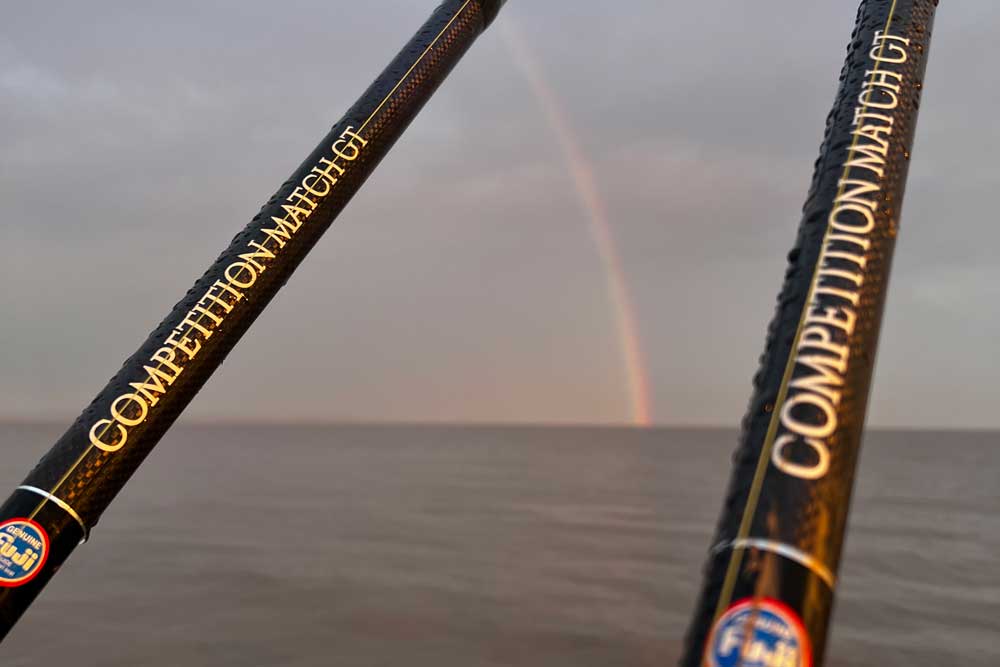
8000 sized fixed spool reels, such as the Tronixpro DV8 or Surf LC, loaded with 30lb X8 Power Braid plus a 60/80lb braid shock leader help maximise your casting distance if you’re using the more standard casting styles. If you prefer to use a multiplier, our Guerilla Mono Mag loaded with 15lb Blaze line and a 60lb Xenon Leader is a good choice. Some anglers prefer to use a tapered shockleader, such as the Xenon Tapered Shockleader or the 50/50 Tapered Shockleader.
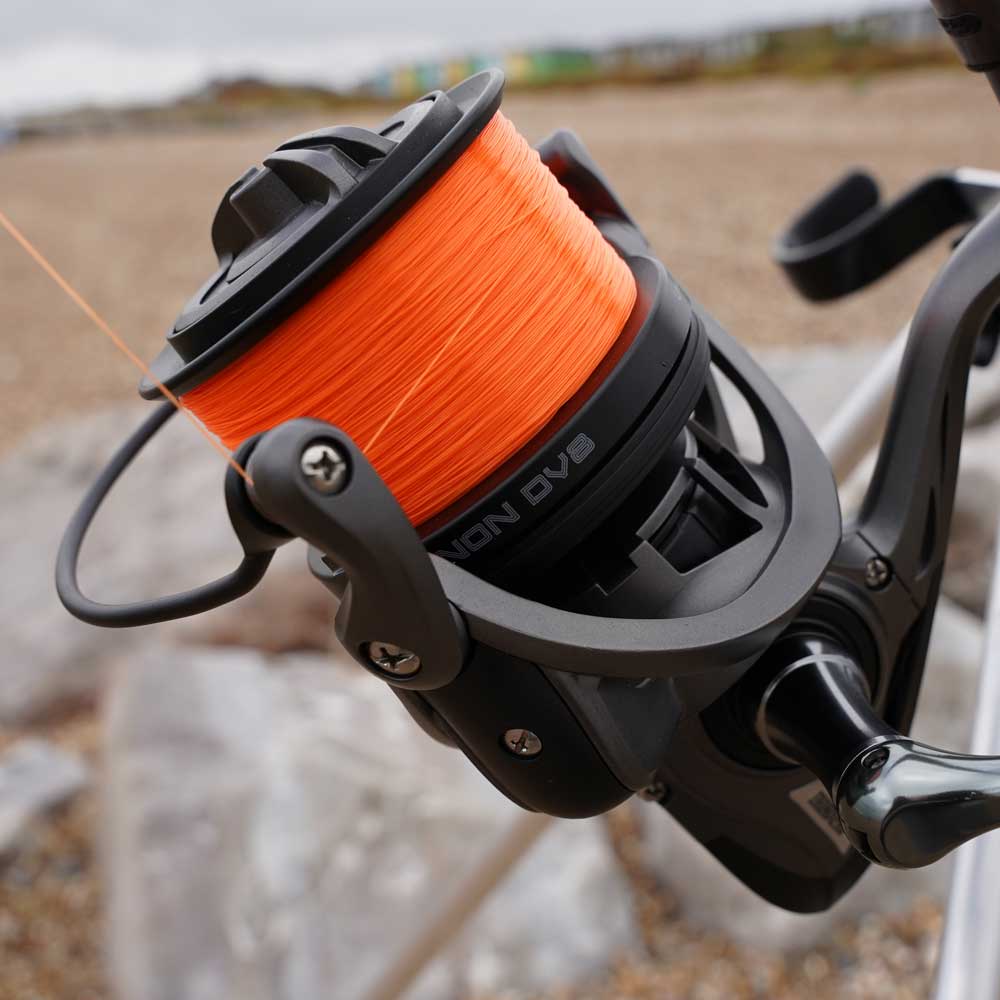
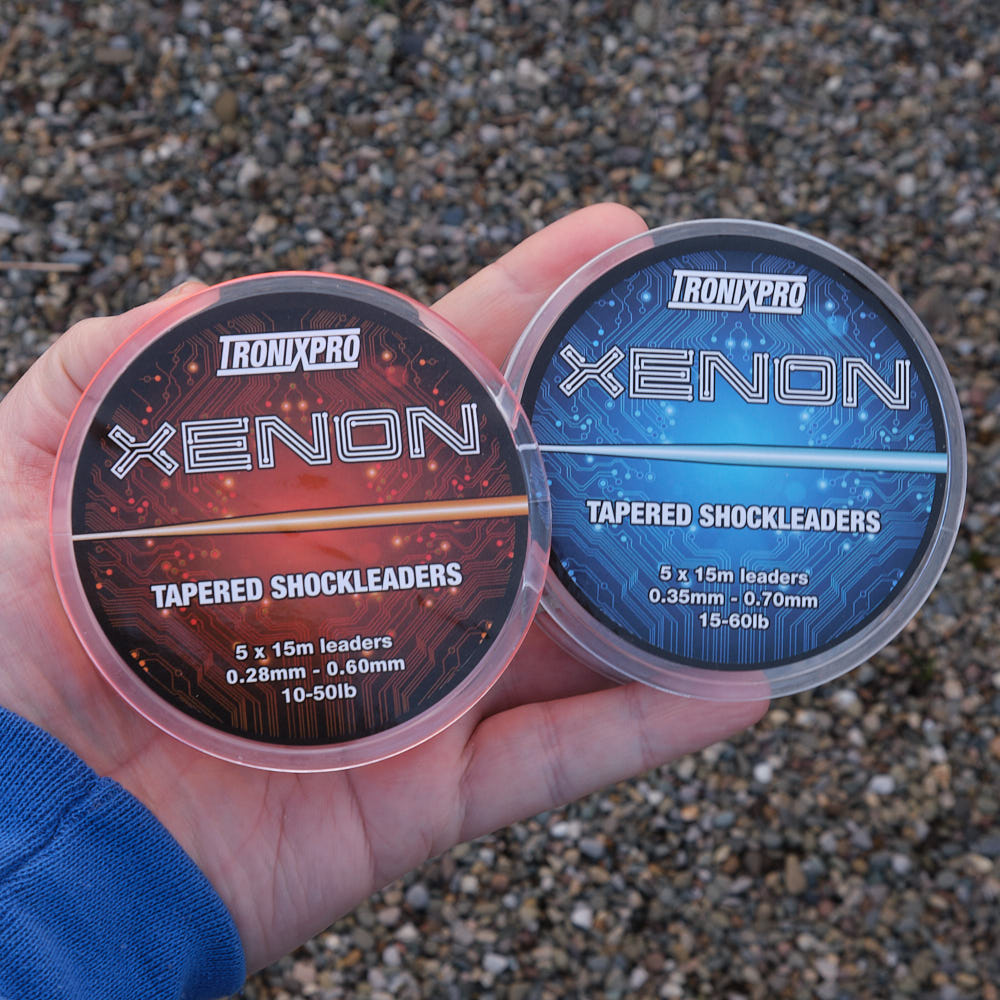
A pulley rig made from a 50-inch section of 60lb to 75lb clear Xenon Leader is the best rig choice. Tie a Tronixpro Big Bait Casting Snap Link to one end. Slide on a 5mm bead, a Pulley Rig Bead and another 5mm bead. Measuring up from the tag end of mono 22-inches, tie in a figure-of-eight knot for the beads to butt up to. On to the tag end of mono slide on a Rig Crimp, a 3mm bead, then an 8mm bead. Now tie on a size 4/0 Tronixpro Beast Hook. The crimp, 3mm bead and 8mm bead form the bait stop and this needs to be crimped in place about 2-inches above the hook. This stops the bait flying up the hook trace during the cast. Clip the hook in the wire hook of the Big Bait Casting Snap Link for casting.
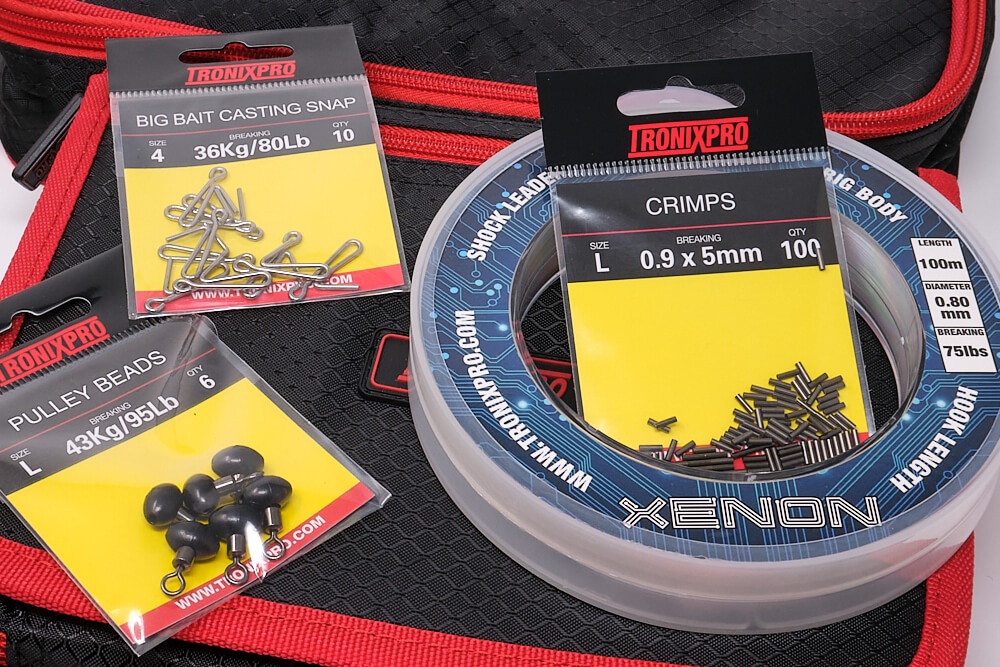
Always fish a release wired lead when thornback fishing. It encourages self-hooking when the ray takes the bait, moves off, then comes up against the weight of the lead to pull the hook home.
Baits
Early in the season, January to April, herring is a killer bait cut into 4-inch sections and bound to the hook with bait elastic. Baits this size are plenty big enough even for double figure rays, plus they cast much further. From April on, mackerel, squid, sandeel and bluey all work well. In winter, thornbacks can also be taken on black lug baits intended for cod tipped with a long sliver of squid, especially off the surf beaches.
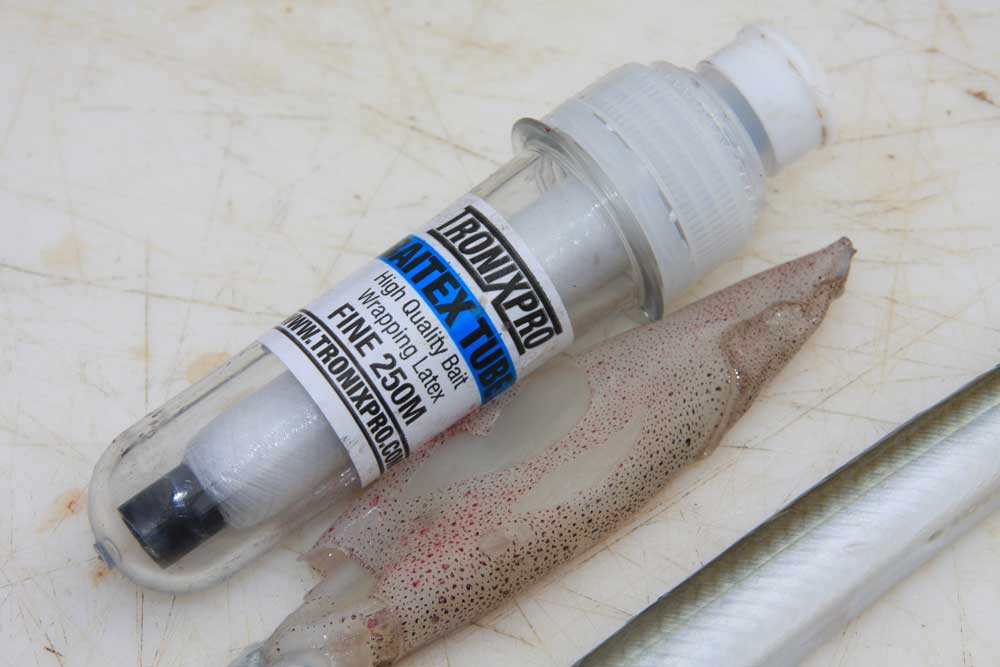
Method
Fishing deep water rock ledges, look to fish off the headlands that jut out into a tide run and fish the downtide side. The thornbacks tend to sit on the inner edge of the tide run and pick off food as it comes to them. Otherwise, fish the mouths of any sandy bays.
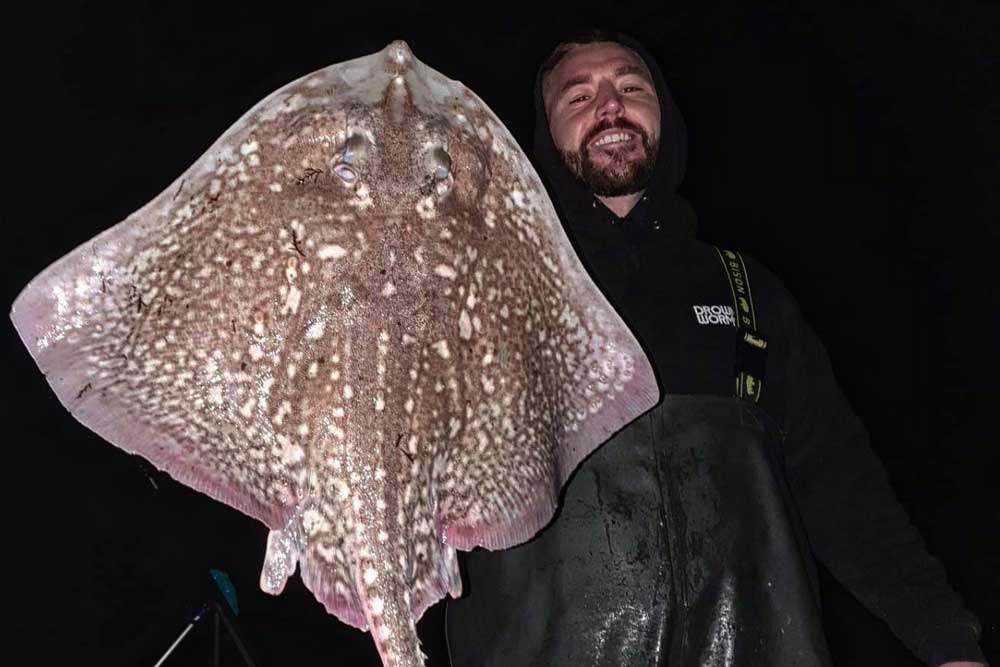
On surf beaches, longer casts are usually more productive and if you can reach the mean low water line after that first hour of the flood tide, you’ll intercept the rays as they push inshore. Also look for depressions in the sand, gutters, and anywhere where there are patches of stone or seed mussel beds surrounded by sand. These are the hotspots to fish.
You’ll often find that if the main beach is inconsistent, moving to each end where rocks or cliffs form can be more productive. Thornback rays typically tuck into these corners and will almost become territorial for a few tides, just moving in and out as the tide floods and ebbs.
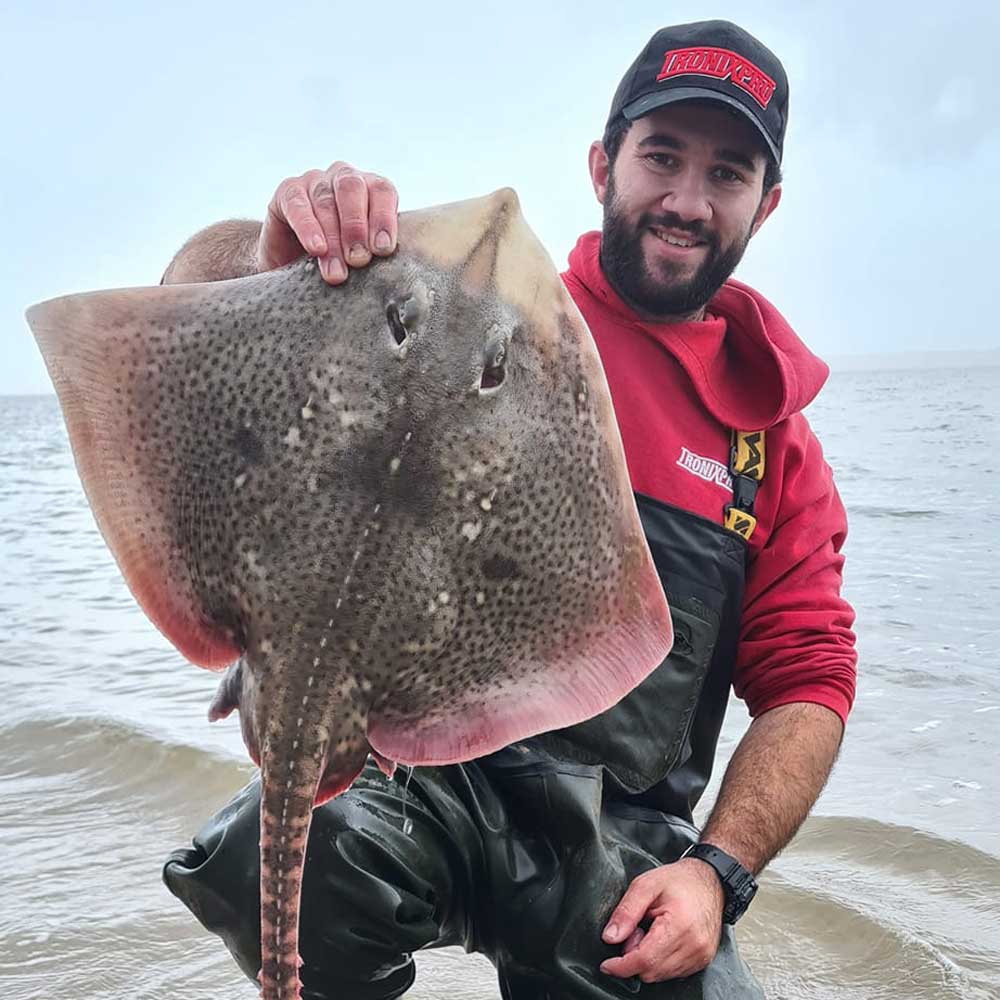
In shallower water, a top trick is to have a deep spare spool option (our range of DV8 and Virtuoso reels have readily available spare spool options) for your fixed spool reel and load this with as much 30lb braid as it will take, 500-yards plus, and an 80lb braid shock leader. This allows you to cast one or two baits far out, then as the tide advances you can walk back, releasing line as you go but leaving the baits out in deeper water until a ray finds them. This is called “lining back” and is very effective in all surf beach situations.
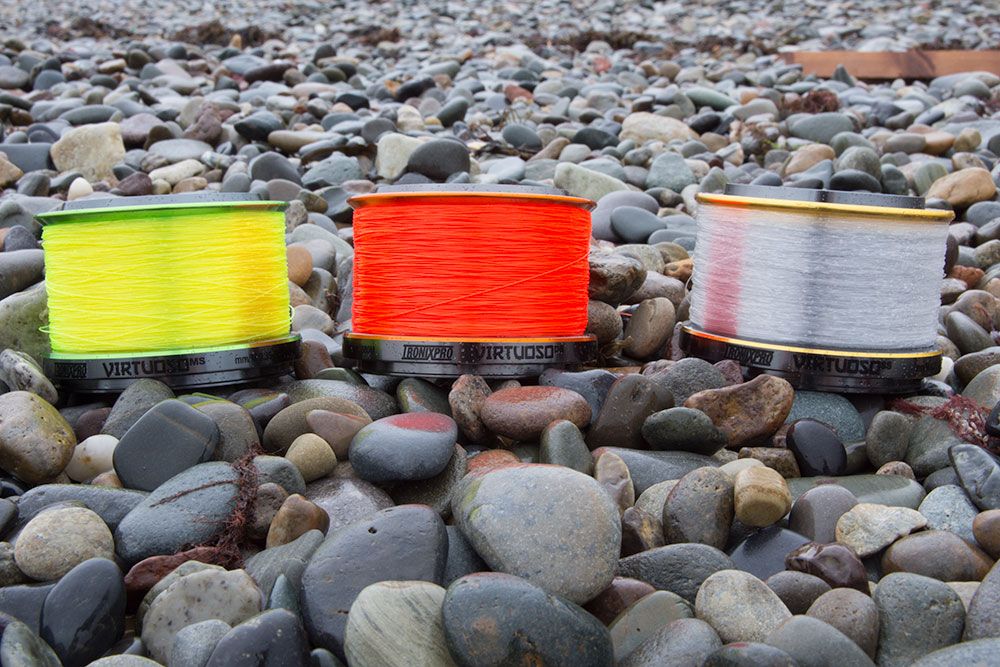
Thornbacks often swim in small groups of a female and two and three or four males. If you get one bite, the same general area can quickly produce a second ray.
Rays have a good sense of smell, but don’t leave baits out longer than 20-minutes or so. A fresh bait oozing juices is always going to be found quicker than a washed-out bait.


